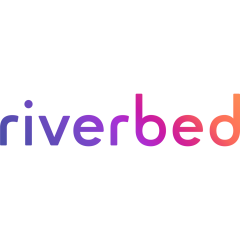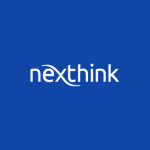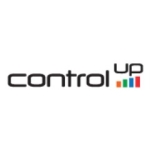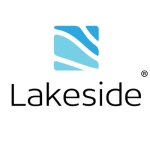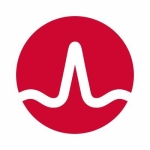What is our primary use case?
One of our use cases was to cover some gaps in our current monitoring. We have visibility into the flows and the traffic coming from our branch routers. We have visibility into the infrastructure, SNMP monitoring for our servers, but we never had anything previously to tell us what the end-user is seeing.
The biggest use case we have is identifying the scope of issues. We get tickets all the time saying, "The network is slow at this location." Being able to see and compare the performance of the applications at different locations is huge for us. And when we have an application that's having issues, it will let us know the scope; if it's just one site or all users or one user on VPN.
We have relatively large operations. I'm responsible for North and South America and although we're part of a global network as well, that's currently my scope. We looked for a solution to help us improve end-user performance monitoring. We have about 8,000 workstations distributed across about 500 locations in the U.S., and in South America, we have 3,000 machines in roughly 200 locations.
How has it helped my organization?
I was looking at it more from the point of view of the performance of the applications. But our service desk has gotten a lot of value out of it because it really can pull all the details from the workstation side. That was a whole separate piece that is actually a very big piece, now, of the use case that really wasn't even something we had planned for.
In terms of cost savings, there's a piece in Aternity that shows application usage. For licensed software, things like Visio or Microsoft Project, a lot of people say they may need that software, but you can run reports and see who's actually using it. If they're not using, you can reassign those licenses which results in actual hard savings.
If we see issues on the network side, it will help guide the troubleshooting process in the user experience. We actually had a call yesterday with our developers to introduce them to the application and see if it is something that they could start using in their QA and validation testing. We haven't gotten to that point yet, but we are starting to look at it.
It also provides visibility into the employee device and into application transactions all the way through to the back-end. That lets you see what the users are actually spending their time working on. We have in-house applications, but it lets us know if they're using them. If we roll out an updated piece of software and we see users are having problems with the new version, we'll stop, for sure, and review and see how we can improve it.
Something else it has is the "smart refresh" dashboard. It's something that we're looking to review further when we start our next refresh cycle. We've already used it to validate performance improvements by increasing memory on some machines before we actually do a full roll-out of a memory upgrade. It's one of the sweet spots for the product.
What is most valuable?
Aternity provides metrics about actual employee experience of all business-critical apps, rather than just a few. It does some out-of-the-box monitoring for the Office suite, but you can create custom monitoring for any of your applications, whether a web client or a desktop application. There's a process where you record the transactions and then you feed that into Aternity in an XML file. It then looks at what you're clicking on and what the URL is and, if it sees that on other clients, it can start recording the transactions for those applications.
We've used that feature to measure employee experience before and after changes to applications, devices, or operating systems. That's something that is really interesting. One of the dashboards can tell you, when an application is having issues, when the issues started or when we had a change window. It will baseline the performance before and after that change window.
What needs improvement?
The process of doing the application recording is a bit cumbersome. It would be nice if there were a friendlier way to do that, or more predefined applications.
Being able to add custom monitoring to dashboards would be nice. Right now, if you want to monitor the value of a registry key on your systems, to get that added into the dashboard you have to reach out to Aternity so they can start looking for that value. It would be interesting if that were more of a self-serve function.
For how long have I used the solution?
We bought licenses for Aternity at the start of this year (2020).
What do I think about the stability of the solution?
The stability of Aternity has been really good. We have not noticed any issues from the client side in terms of causing a problem with the additional data it's collecting. It's been very solid.
What do I think about the scalability of the solution?
It's SaaS-based so we haven't had any issues with scalability at all.
How are customer service and technical support?
Their tech support is very good. I haven't had any issues with them. We have project hours with them for the implementation and they're very responsive.
How was the initial setup?
The initial setup was very simple. I was shocked, honestly. We just installed the agent on a couple of machines, logged into our portal, and it was already reporting data. Literally, within two minutes of getting the app installed, the machines were checking in.
Our deployment is still ongoing because we're looking at expanding the product. We're doing some demos for other business lines, globally. But for North America, we rolled it out in about three weeks, which is our normal cycle in terms of product deployment.
Our implementation strategy was to start with our pilot users, 100-plus folks, and then just roll it out to our offices.
I was the only one involved in the deployment, on our side, and I'm the one who maintains and, more so, uses the solution. As a SaaS platform, it doesn't really require much maintenance. It's really just the user account administration around who we want to give access to and, occasionally, updates to the clients. For that I just submit changes to our packaging team and they deploy it.
The only thing we really had to consider for our global testing is that we had to run the agent installer with the PAC file, the proxy config settings. But that's defined on their website, so it's not really an issue.
What was our ROI?
We have seen return on our investment, for sure. The software licensing piece alone, those reportings, wasn't even part of our initial use case, but it's a way that tool provides hard savings.
What's my experience with pricing, setup cost, and licensing?
For what it is and for all the different use cases, it's well worth the price. We did some negotiation with Riverbed, so we got a decent rate.
In addition to their standard licensing fee, initially there was the project implementation cost, to have the support from the Aternity project team.
Which other solutions did I evaluate?
I launched the investigation last summer into about 10 vendors, and started out looking at how to improve our network service monitoring. The focus, initially, was on players in the network performance monitoring.
But I ended up coming to the conclusion, with Aternity, that it was probably going to give us the most bang for our buck. It was also one of the few solutions out there where we could actually see what the users were experiencing when accessing on-prem applications as well as SaaS-based applications, and when they're on the network or off the network and going through VPN. That was pretty key for us because when you start looking at monitoring solutions, there are packet analyzers and stuff that comes into the DC and there are things that you put out in your branch offices to monitor the connection back. But because where applications reside now is changing, Aternity was a really good fit for us so that we could get that insight regardless of where the user is and where the application is.
We narrowed it down to four, including Aternity. The others were AppNeta, ThousandEyes, and NETSCOUT.
It wasn't so much that we chose Aternity over ThousandEyes or AppNeta. They perform two different functions. The result of the review was that we needed two sets of tools: one that monitors the end-user experience, what they see transactionally and how the applications are performing, and a solution that could look at the health of the actual routing and the network, end-to-end. We ended up with two recommendations for solutions.
But in terms of choosing Aternity over the other solutions that were more closely aligned with it, like the NETSCOUT agent, it had a lot of functionality out-of-the-box, which is good, and it was fast-paced, which is a good model for us. They put out new functionality every month, which is great. For me, it made sense to monitor the performance from the client itself and not from some point in the network that could potentially change in the future. We've had a lot of offices closed or move based upon COVID, and we were lucky that it didn't impact us. We didn't go out and buy a bunch of probe devices to put on the network and then have a huge shift in how users are working. It worked out well for us.
The fact that other products may provide deeper visibility into device performance doesn't really concern me. That wasn't even our first use case for the product, so we look at all the value we're getting out of the service desk side as icing on the cake.
What other advice do I have?
Getting the most value out of it depends on your use case: if you're using it more for service desk agent support or if you're using it for business-level reporting on application performance. My advice would be to learn about all the different use cases there are because it continues to find ways to generate new value for us.
Understanding user behavior is probably one of the most enlightening things that we've gotten from the tool. We're seeing that there are certain applications they spend a lot more time in than we may have ever realized, and certain periods when they're active that we may not have realized before.
The solution’s Digital Experience Management Quadrant (DEM-Q) to look at how your digital experience compares to others who use the solution is a relatively new feature. They just rolled it out a couple of months ago, so we've taken a peek at it. I've shared it with my upper management to show that we're actually in the good quadrant. We're running above other industries. It's useful to give you a "sanity check," but there's not a whole lot of information out there; it's pretty high-level. It's good to see where we are versus other corporations.
In terms of seeing the employee experience, it doesn't do screen recording to see what they're experiencing. It gives a representation of the transactions that they're doing and what the performance for those transactions was. In some cases, but not in all, it provides a good enough picture to understand what they're going through. Sometimes we have to do a screen share to really understand what the user is trying to accomplish and what issues they're having. But the good thing about it is you can always go back in time with Aternity. If the user has an issue, by the time they call the service desk and get a hold of an agent and start to troubleshoot, they may not have the problem anymore. But you can always go back and look at the history of those transaction metrics.
Something else we're starting to work on now is the automated remediation actions that the service desk can do. Those weren't even part of the initial review, but because of the value of having all that data together, it's been very beneficial for them. There are scripts so that if a user runs into an error on the screen, we have a fix that we know we can deploy. The help desk can just right-click and run that auto-remediation script. We've done some initial testing with it, but it's next on our list.
Overall, I would rate Aternity a 10 out of 10. It's such a powerful tool with so many different uses. We don't have an infinite budget for IT. A lot of times, investment in tools is really something that's at the bottom of the list. So to get one that has so many capabilities built into it and that is so flexible — we can even convert, and we have converted, some of our extra end-user licenses over to the server-side monitoring piece — is incredible. It's like we were going for one product yet we could roll it into a completely separate product which is comparable to Dynatrace. For sure, it's quite impressive.
I'm a huge fan of it. It's definitely a great product and it sets the stage for some advanced capabilities in terms of the metrics that they're collecting. They're starting to look at more of the machine learning and AI side. I have a lot of hopes that the product is going to continue to grow into something new in the future.
Disclosure: PeerSpot contacted the reviewer to collect the review and to validate authenticity. The reviewer was referred by the vendor, but the review is not subject to editing or approval by the vendor.

